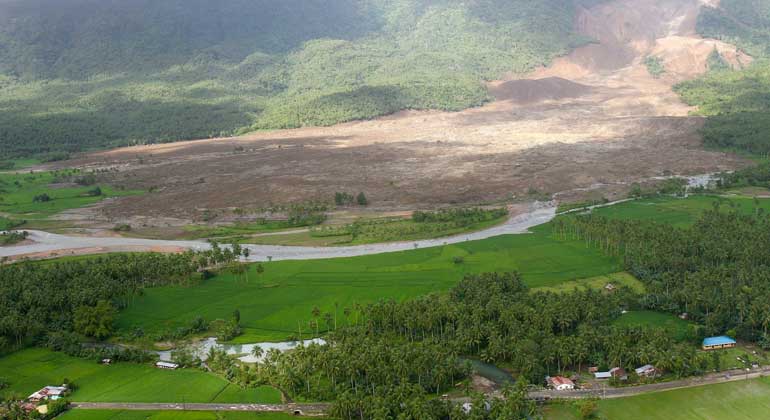Landslides increasingly threaten the world’s urban poor cities
Landslides will affect more and more settlements in poor regions of the world in the future, as heavy rainfall and informal urbanisation destabilise slopes in the tropics.
This was modelled by Ugur Öztürk from the GFZ German Research Centre for Geosciences Potsdam and the University of Potsdam and his colleagues from the University of Potsdam, the University of Bristol, the Indian Institute of Technology Roorkee and the Potsdam Institute for Climate Impact Research. Their results were recently published in a comment in the scientific journal Nature.
Background: The danger of landslides
Worldwide, landslides kill 4500 people on average annually. This number will increase further as more and more people are exposed to landslides considering the rapid urbanization, especially in Tropical low- and lower-middle-income nations.
One cause: Uncontrolled urbanisation
The comment states that climate change will undoubtedly aggravate the conditions causing landslides. But more importantly, unregulated urbanization decreases hillsides’ stability by cutting into hillslopes or terracing to make space for houses. Such informal construction practices make hillsides steeper and thus more unstable. Removing plant cover and adding water through poor drainage or leaking pipes make landslides more likely. So does illegal mining and poorly engineered construction of infrastructure such as roads.
Consequence for risk reduction
Ugur Öztürk, the lead author of the article, states that “Disaster risk reduction experts need to consider ‘dynamic’ interactions between the natural environment, rainfall patterns and informal urbanization, considering economic and political inequalities to predict increasing landslide risk” and further adds that “Process-based models can help to identify ‘low-regrets’, cost-effective solutions.”
The role of models using the example of five tropical cities
The study combined data and models of urban landslides and climate change to identify likely future hotspots of landslide risk in five representative cities across the tropics: Freetown in Sierra Leone, Antipolo and Baguio in the Philippines, Port au Prince in Haiti, and Bukavu in the Democratic Republic of Congo as case applications.
Urbanization as a risk also in case of other geohazards
Urbanization patterns put people in harm’s way, not only because of landslides. In other parts of the world, cities show different expansion patterns exposing people to other natural hazards. Fabrice Cotton, Director of the GFZ for the topic Geohazards, said, “Tehran, for example, expands towards an active fault line. This not thoroughly planned expansion might increase the potential life loss in case of a future large earthquake in the region.” Supporting the article’s conclusions, Cotton added that “everyone involved, such as scientists, policymakers, disaster risk reduction practitioners, should collaborate to understand and address the social, physical, political and economic drivers of future hazards together to mitigate the impacts.”
- How climate change and unplanned urban sprawl bring more landslides, by Ugur Ozturk, Elisa Bozzolan, Elizabeth A. Holcombe, Roopam Shukla, Francesca Pianosi & Thorsten Wagener, Nature 608, 262-265 (2022), doi: 10.1038/d41586-022-02141-9








